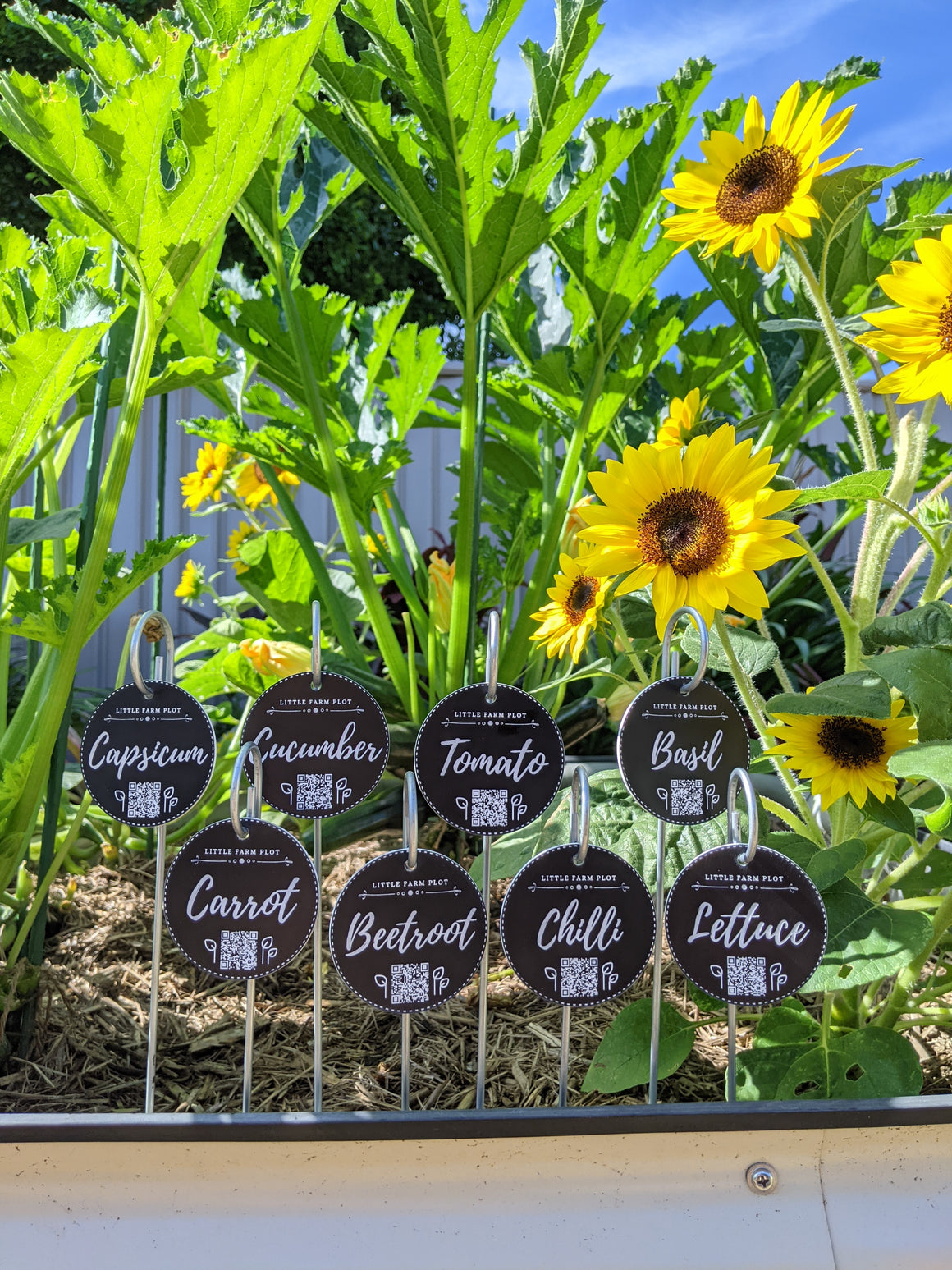WE ARE CURRENTLY NOT TAKING ONLINE ORDERS. CONTACT US FOR PURCHASE ENQUIRIES.
Growing Guide: Basil


Basil is a very popular, quick growing herb that we recommend every backyard farmer to include in their little farm plot. It can be easily grown in pots or a vegetable bed. Basil is most commonly used in Italian and Thai cuisine.
Plant
- Basil likes a warm, sunny position. If you live in cooler climates, plant in Spring. If you live in the tropics you'll need to grow it during Winter because it won't handle the heat. If you live in-between those two extremes you are lucky enough to grow basil just about all year round.
- Basil grows best in well-drained soil, you'll likely loose it if it becomes water logged.
- Plant alongside tomatoes, cucumber and corn.
Grow
- Basil leaves can scorch easily in warm weather so avoid wetting the leaves when you water.
- Water frequently during the first month of growth to keep the soil moist.
- Once mature, give it one good solid water per week. Increase during the hottest months if you see your basil leaves wilt.
- Pinch out the top of the plant to encourage it to bush up.
- Feed once a fortnight with a liquid fertilizer to bring on an abundance of lush green leaves.
Harvest
- Harvest leaves from the top using scissors to encourage new growth.
- Regular harvesting of leaves will promote further growth.
- Once your basil goes to flower, leave it as long as possible to attract the bees which in turn will help pollinate your other plants. The flowers will then go to seed which you can collect to replant the following season. Its a win win situation!
Varieties
Basil is an annual in cooler climates and a perennial in warmer climates. This means it will complete a full life cycle in one season in the cooler climates. In warmer climates you can prolong its life by regularly harvesting leaves to prevent it going to seed. Choose your basil variety depending on the cuisine you prefer.
- Sweet Basil - Common variety with a strong fragrance and sweet, spicy flavour. Best variety for Italian cooking.
- Thai Basil - As the name suggests, this variety is best for Thai, Vietnamese and Indonesian cooking. It has a unique licorice flavor.
- Purple Basil - Similar flavours to the sweet basil but with attractive deep purple coloured leaves.
In the kitchen
Depending on the variety you grow it has a sweet peppery taste to a spicy licorice flavor.
- Basil is one of few herbs to increase its flavor when cooked. For best results add it at the end of cooking.
- Leaves can be used whole, torn or finely chopped.
- If the stems are small you can include them in your cooking. Larger stems will be bitter and it will be best to discard them. Never use the stems in your pesto because it will cause it to go brown.
- Add leaves to a bottle of olive oil to infuse the flavor and use on salads.
- If your plant is at the end of its cycle, use up all of the remaining leaves by making pesto!
Sign up for special VIP offers & be the first to know when we launch new products!
© 2025 Little Farm Plot.
Powered by Shopify



